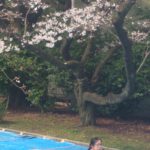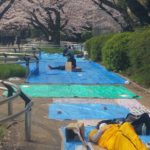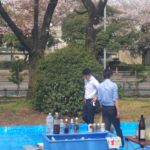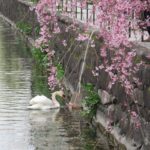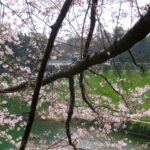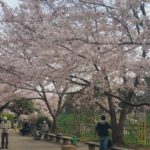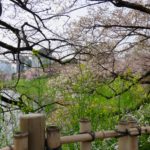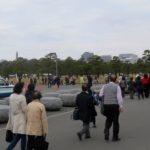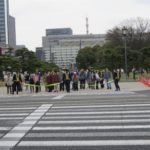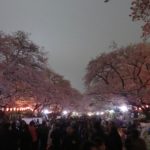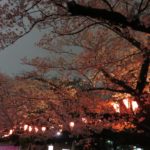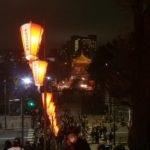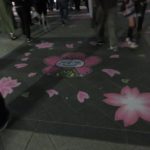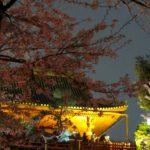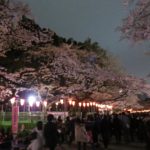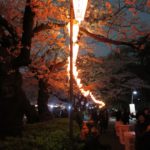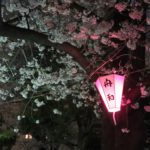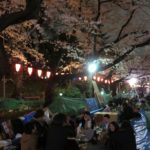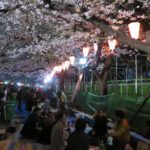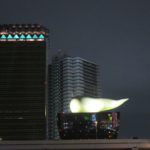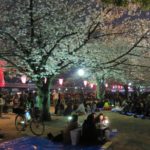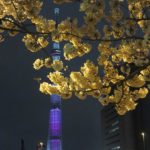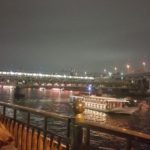One month has passed, which amazes us. We wonder if some of the new things we saw and heard are becoming a part of ourselves now, familiar and no longer strange. So here are few random observations collected together as we reflect on the last four weeks.
Food, of course! The department stores have glorious displays, and expensive luxuries (knock off the last two numbers, and you have an approximate $ amount, the mango is $25, the melon $16 and the croissant $4)
What says BUY ME more persuasively than these smiles?
These are onigiri, rice balls wrapped in seaweed, filled with fish, seaweed, pickled veggies, plums, and so much else. These were $2-3 each, bought at the station on our way home from school (notice the packaging, more below). Also at this restaurant, we ate noodles at the stand up counter.
Fast food: a delicious tempura and bonito rice bowl, under $12, and a sushi-go-round counter where we ate 22 pieces for 3500 yen. The color/pattern of the plate tells you the price of the sushi on it!
And there are the expensive restaurants. One whole meal was made from this “rosy sea bass”: sashimi, baked, tempura, sukiyaki (hotpot), fried, so many courses and all delicious. The restaurant is below sidewalk level, unmarked and has only about 4 tables. Next up – a counter where we ate so many light, fresh and totally non-greasy fish and veg tempura, followed by a mussel soup, rice with shrimp and egg topping and tea.
Sunday in the Park with Snacks! How could you miss out on fish-on-a-stick, octopus balls, crab, pancakes, corn or sticky rice?
So many choices, but the window displays at restaurants can make it easier to decide. And if you don’t want to go out…….
What is in here? Strawberries on a styrofoam tray, covered in a plastic lid, in a plastic bag (inflated to stop the berries squashing) with an ice pack. From a regular small supermarket. The wine has its own protective sleeve, and the little icepacks are in every bag with cheese, meat and fish. Extra icepacks available of course, on the bagging counter, in a special bin.
We dread Laura and Isak’s stay because they will have a fit over the packaging culture. Apples, dry-cleaning and individual slices of bread within the packet:
Random sights: these raised yellow lines down the sidewalks and corridors? Used by the blind as guidelines. And notice the two guards in their white rain uniforms posted at the entrance to the hotel, they direct pedestrians and traffic so politely, with a bow!
Late one afternoon we saw a little girl fast asleep on the subway and Michael woke her up at Shibuya, our stop, and the end of this line. Children are used to taking the subway alone and I loved these 3 little girls disappearing down the steps to the tracks. This sign is in our local station: Gaien-mae, and says “safety station for children”. Go Thomas The Tank!

 The individual Kanji mean hand and long. Long hands! Itchy fingers! Kleptomaniac! We get it, this is a lobster with long claws. The Japanese writer put “long hands” into the dictionary, got kleptomaniac – and there we have it.
The individual Kanji mean hand and long. Long hands! Itchy fingers! Kleptomaniac! We get it, this is a lobster with long claws. The Japanese writer put “long hands” into the dictionary, got kleptomaniac – and there we have it.
 Soccer (サッカー, pronounced saa-kaa) may be overtaking baseball in popularity – a recent survey of Japanese boys shows that more of them want to be soccer players than baseball players, although
Soccer (サッカー, pronounced saa-kaa) may be overtaking baseball in popularity – a recent survey of Japanese boys shows that more of them want to be soccer players than baseball players, although 

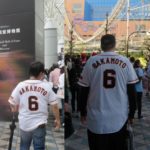
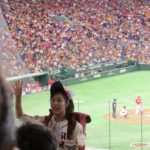
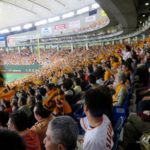
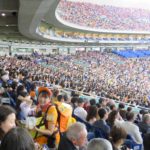
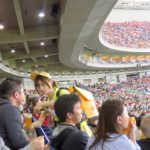
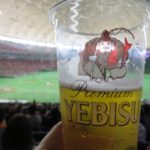
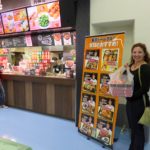
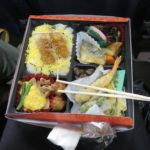
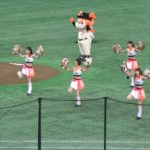
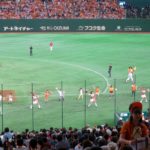

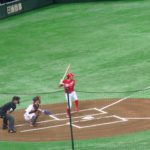



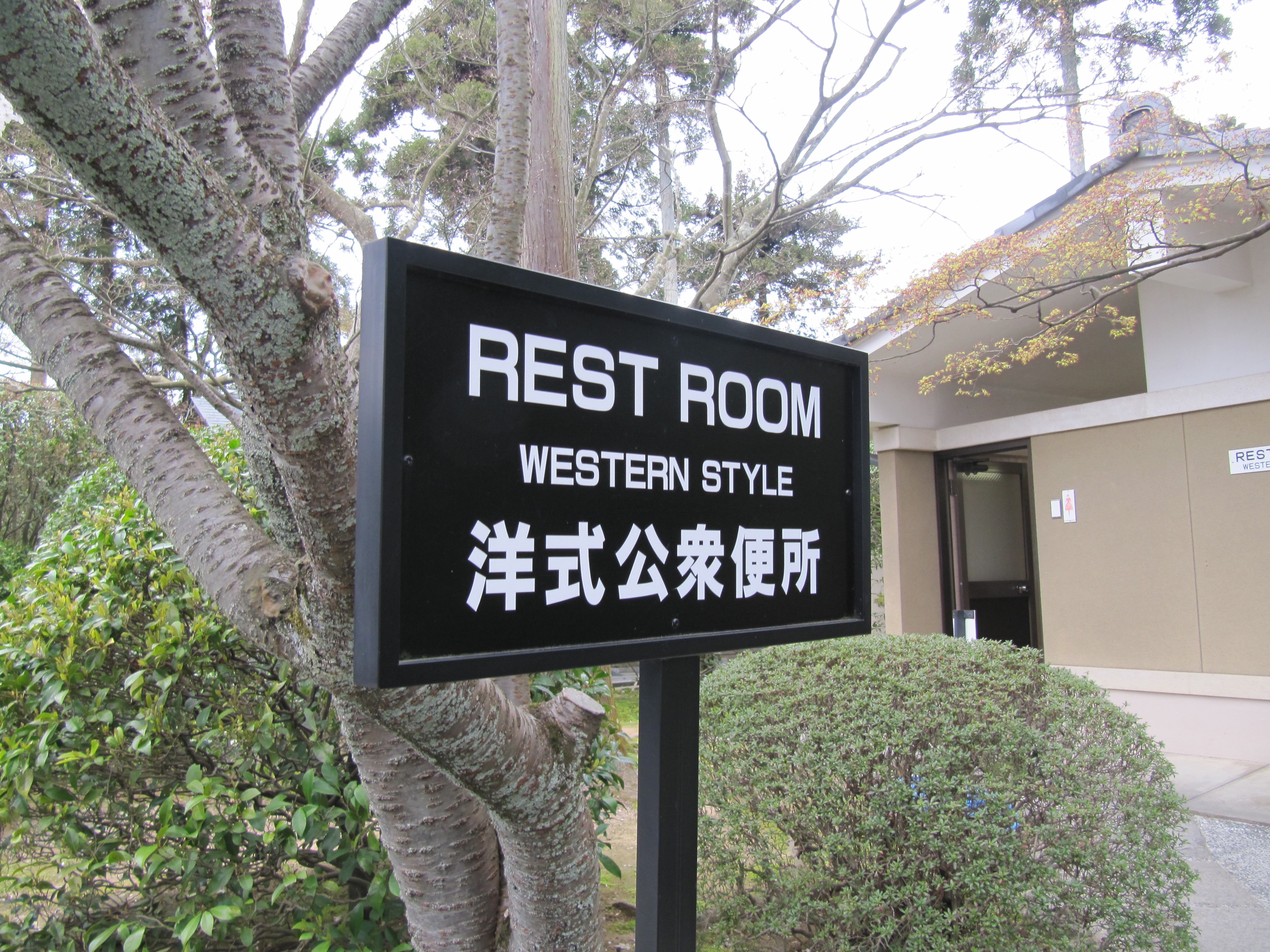
 This is our very own Toto. If you have never visited Japan, you cannot imagine the joys of Japanese loos. Nor their complexity. But it is so worthwhile to spend a while mastering the art of using them, because this will lead to a thoroughly wonderful experience. You’re not in Kansas anymore.
This is our very own Toto. If you have never visited Japan, you cannot imagine the joys of Japanese loos. Nor their complexity. But it is so worthwhile to spend a while mastering the art of using them, because this will lead to a thoroughly wonderful experience. You’re not in Kansas anymore. These are not so much fun. Be careful not to go into the wrong stall (sign may read: Japanese style). And if you do: well done! It was worth working those quads at the gym. Just make sure you face – backwards – and hang onto your purse, above ground level.
These are not so much fun. Be careful not to go into the wrong stall (sign may read: Japanese style). And if you do: well done! It was worth working those quads at the gym. Just make sure you face – backwards – and hang onto your purse, above ground level.


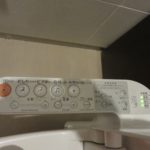
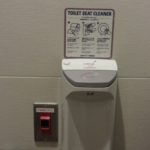




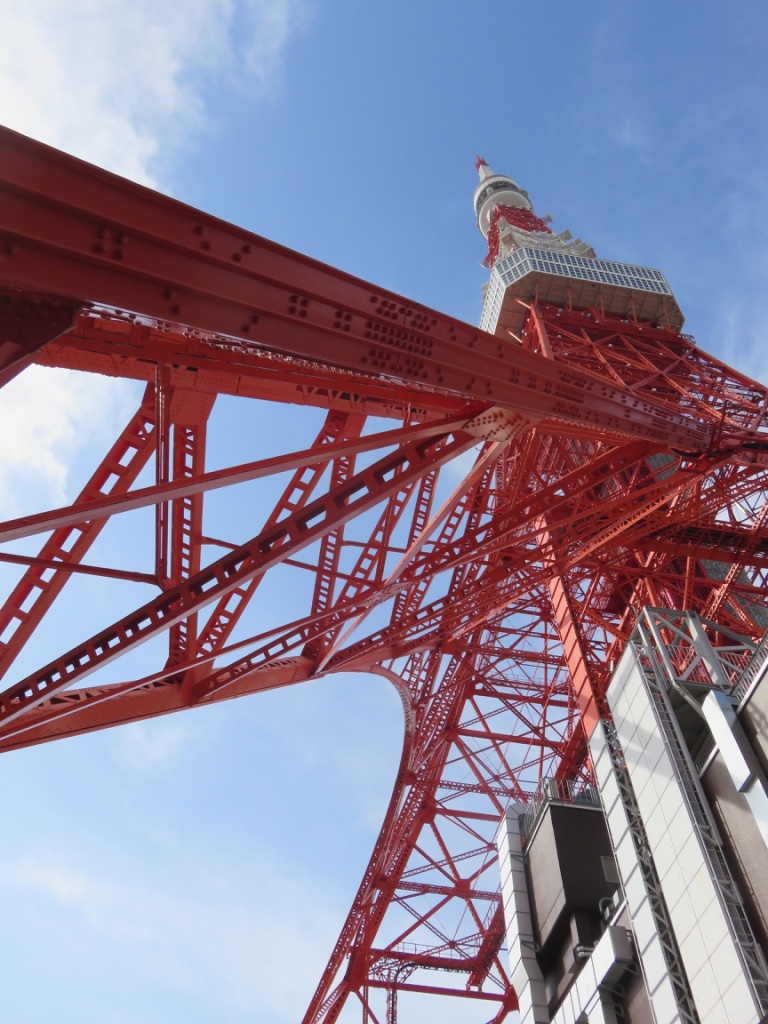
 So when we were invited to meet someone at the next door Prince Plaza Hotel, we did what we had to do and headed off to the Tower after an 一番おいしい (ichiban oishii – number 1 delicious) Tempura lunch with our very knowledgeable host.
So when we were invited to meet someone at the next door Prince Plaza Hotel, we did what we had to do and headed off to the Tower after an 一番おいしい (ichiban oishii – number 1 delicious) Tempura lunch with our very knowledgeable host.
 We reached the 150 meter viewing platform, wandered around, and took some pictures including, incongruously, a shot of a model of the Tower framed against a window. A little girl, fearless or simply unaware, looked through the glass floor, mocking our weak knees.
We reached the 150 meter viewing platform, wandered around, and took some pictures including, incongruously, a shot of a model of the Tower framed against a window. A little girl, fearless or simply unaware, looked through the glass floor, mocking our weak knees.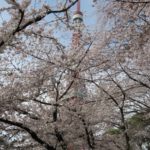
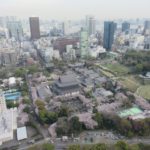
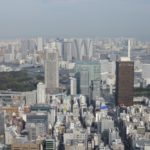
 Mostly, however, we saw the astonishing number of Tokyo’s tall buildings, a reminder of how this small and mostly mountainous nation manages to pack in over 100 million people, including nearly 40 million in the Tokyo-Yokohama area, to live and work. We got another reminder when, around 5 pm, we returned home on the Ginza line.
Mostly, however, we saw the astonishing number of Tokyo’s tall buildings, a reminder of how this small and mostly mountainous nation manages to pack in over 100 million people, including nearly 40 million in the Tokyo-Yokohama area, to live and work. We got another reminder when, around 5 pm, we returned home on the Ginza line.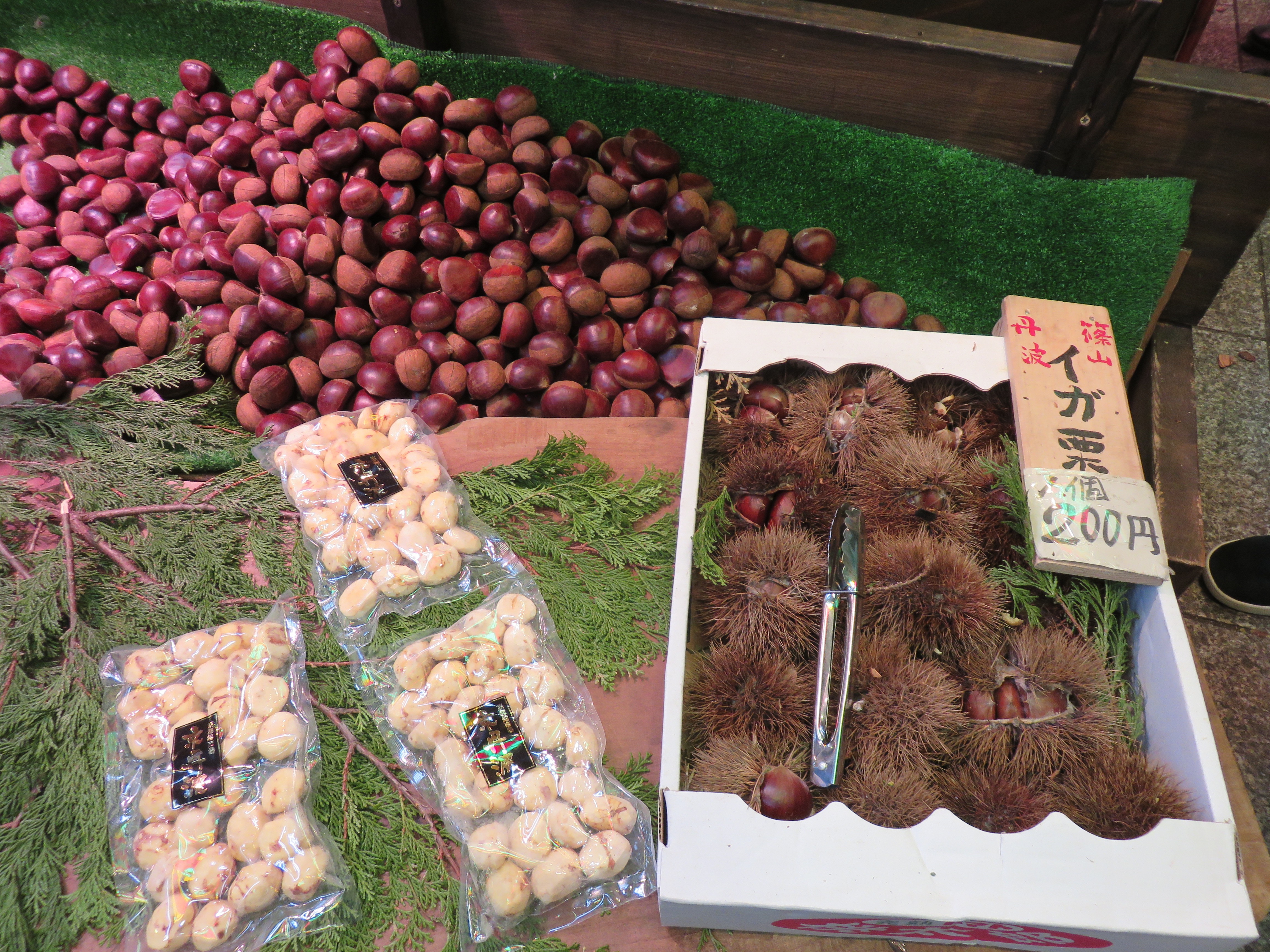

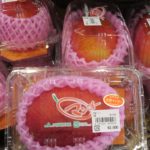
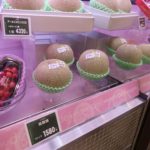
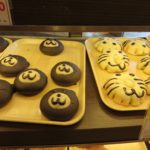

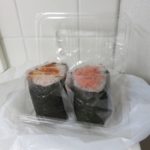
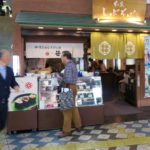

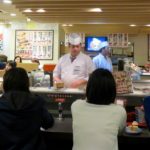
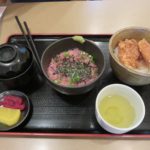

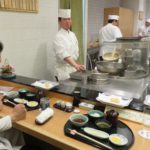
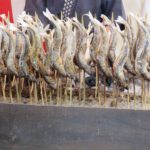
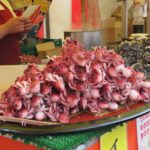
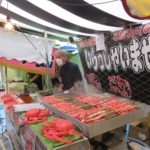
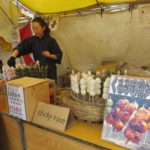
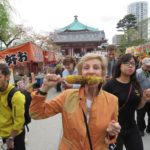
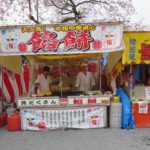
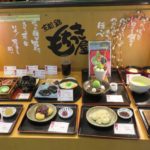
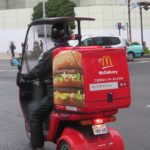
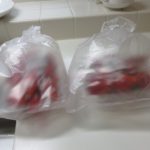
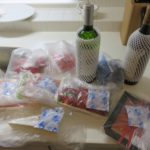
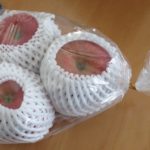

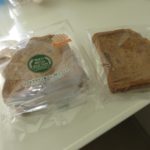
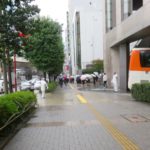
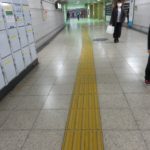
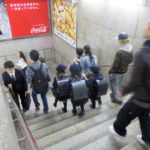
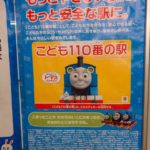
 In keeping with the problems that a vowel can cause (see
In keeping with the problems that a vowel can cause (see 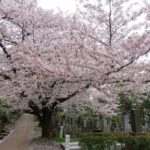
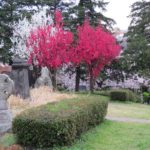
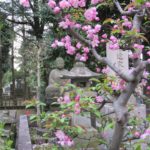
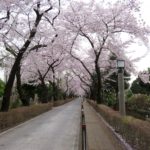
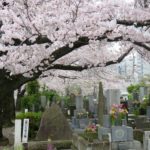
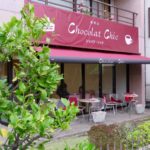

 Our school is in Shibuya. That’s a 5 minute walk from the apartment to the subway station, 2 stops on the subway (no changes), and a 10 minute walk from the station: allow 30 minutes. Today we walked home and here are some photos – 3 hours later!
Our school is in Shibuya. That’s a 5 minute walk from the apartment to the subway station, 2 stops on the subway (no changes), and a 10 minute walk from the station: allow 30 minutes. Today we walked home and here are some photos – 3 hours later!
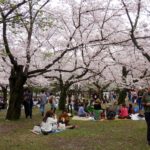
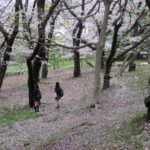
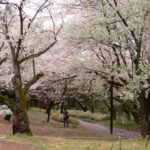

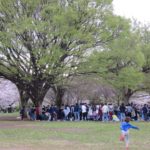
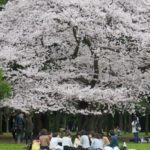
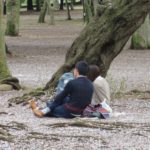


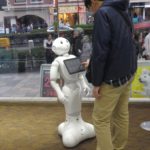
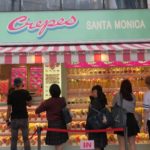




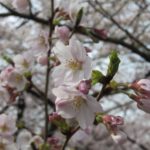
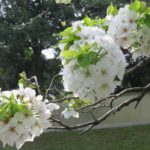
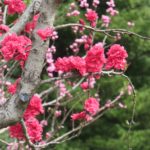
 (
(